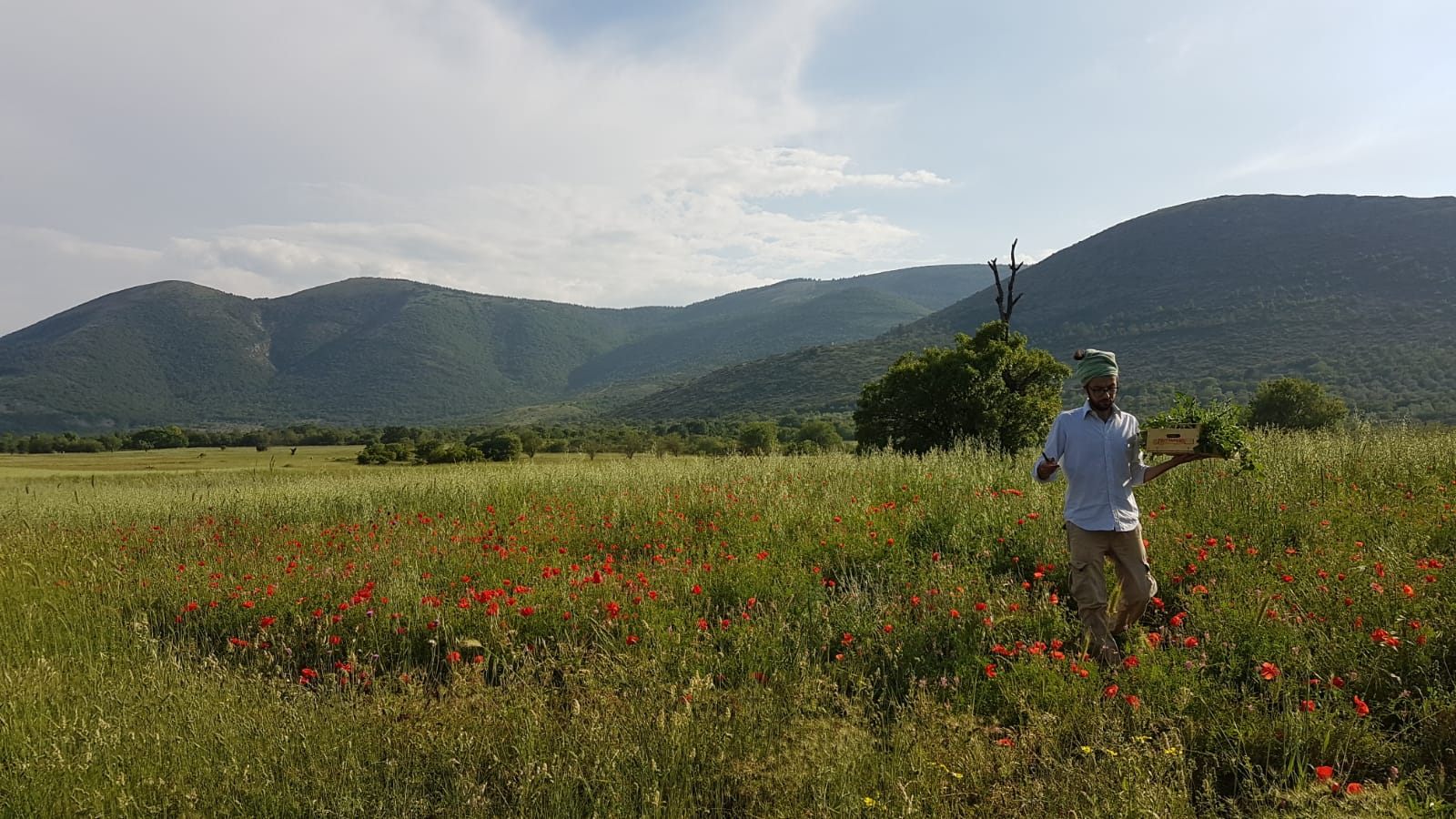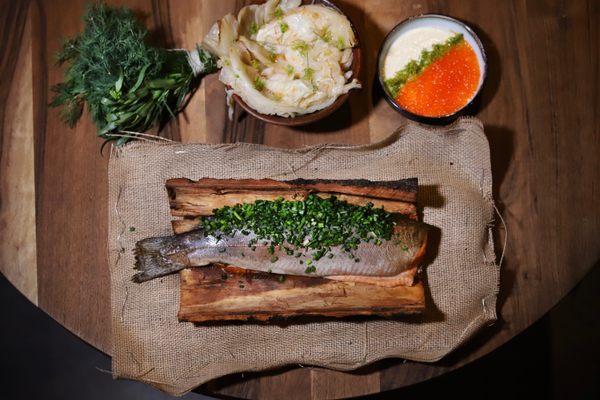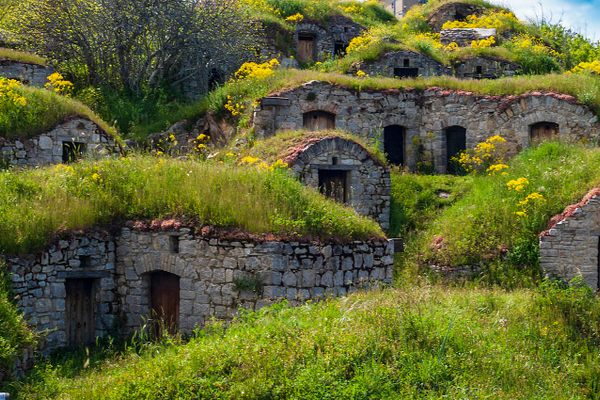Reviving the Lost Tradition of Cooking Flowers
It was once common across rural Italy.

Picking, cooking, and eating flowers and wild herbs was once a common practice across rural Italy. From Naples’ sciurilli (deep fried courgette flowers) to Veneto’s frittelle di fiori de gazia (acacia flowers doughnuts), most regions have a dish whose key ingredient is flowers. But after World War II, industrialization and urbanization led to the abandonment of this ancient tradition. Now, one woman is trying to bring it back.
Elena Rosa, whose last name literally means “Rose,” is growing flowers, wild herbs, and rare vegetables in a two-hectare farm nestled between the wheat fields of rural Piedmont, about 30 miles from the snowcapped peaks of the Cottian Alps. Rosa grew up in Turin, Piedmont’s main city, but spent summers with her grandparents in Ceresole Reale, a mountain village inside Gran Paradiso National Park. That’s where she first learned about foraging.
“As a kid, I loved helping my grandma picking vegetables,” she says. “I used to go out into the woods to look for wild caraway to make grappa.” Now, some 30 years later, she’s delivering flowers to the kitchen of a Michelin-starred restaurant.

“Foraging for flowers and herbs was a widely diffused practice across the Alpine area of northwest Italy,” says Giulia Mattalia, a doctoral student in Ethnobotany at Ca’ Foscari University in Venice, who has studied folk plant knowledge in Piedmont. “Cooking with flowers was a daily practice for most families.”
Common recipes included soups and frittatas made with luppolo (hop flower), jams and infusions made with rosa canina (dog rose), and dumplings filled with tarassaco (dandelion). Flowers were also a key ingredient in popular herb digestifs such as Serpui, a grappa seasoned with wild thyme, and Genepy, a spirit made with eponymous genepy herbs.
“Wild flowers and herbs are rich in vitamins and minerals, and they were especially important during time of famine, disease, or war to provide sufficient nutrition to the population,” says Alessandro Di Tizio, a graduate of the University of Gastronomic Science in Pollenzo who works as a professional ethnobotanist.
Indeed, one of the few texts dedicated to foraging in Italy was published by Florentine doctor and naturalist Giovanni Targioni Tozzetti, who survived the brutal famine that hit central Italy in 1764 thanks to his knowledge of wild plants. Tozzetti’s 1767 treaty titled De alimenti urgentia, which literally means “Of urgent aliments,” was written to record life-saving knowledge about gastronomic and medical uses of wild plants for future generations. But Tozzetti’s work is an exception. Academics rarely studied or recorded traditional knowledge about wild plants. Instead, women transmitted the information in an oral tradition—an informal process halted by the onset of industrialization in the 1950s.
“After World War II, many young people left rural areas to look for work in cities, and were no longer interested in foraging,” De Tizio explains. “And those who stayed could often do without foraging thanks to newly available industrial products.”

Italy’s post-war industrialization affected farming practices, too. Many farmers switched to lucrative monocrops to meet market demand. In the span of a generation, traditional folk knowledge of wild plants was lost. The only keepers of such ancient notions are elderly people living in rural areas.
When Elena Rosa left Turin to move to the Alpine area of Val Pellice in 2009, she accidentally stumbled upon one such guardian of folk knowledge, an 86-year-old woman named Iride. “She was living in a house not too far from the one I moved into,” Rosa explains. “But she would only speak in Angrognino, a local dialect, so I tried learning it.”
Thanks to Rosa’s rudimentary dialect skills, Iride was able to share her vast knowledge of wild herbs and flowers. During long walks in the woods of Val Pellice, she showed Rosa how to recognize, pick, and cook wild flowers and herbs. “Iride would tell me plants’ names in Angrognino,” Rosa explains. “So after each walk, I would do more research to find out their official botanical names.”

Two years ago, Rosa purchased abandoned farmland in Gemerello, a rural area at the foot of the Cottian Alps. After years of job-hopping, from chef in a Piedmontese restaurant to manager in a construction business, she was looking to start her own organic farm. The initial plan was to grow regular crops, but her foraging sessions with “grandma Iride” inspired her to start what she calls an “ancient seed farm.”
She now grows roughly 200 different seeds, ranging from rare vegetables to wild plants and flowers including nasturtium, cornflower, and dahlias. “I have learned that flowers are very nutritious and can be used for a vast range of recipes,” Rosa says. “Take bright-orange Nasturtium flowers. They are rich with Vitamin C and each of their components can be [used in different food preparations].” Nasturtium seeds, for example, can be ground to make pepper, blossoms marinated to make vinegar, and petals eaten raw or sautéed with butter. The velvety white leaves of begonia semperflorens are particularly interesting: They taste just like citrus fruit and can be used to season seafood dishes instead of lemon.

But starting an ancient seed farm was not easy. Italy’s byzantine bureaucracy was in the way. “Local health authorities don’t know how to rate flowers,” Rosa explains. “I got a mix of surprised and skeptical reactions when I explained you can actually eat them.”
Rosa grows all of her crops according to synergistic agriculture, an organic practice based on the teachings of Japanese farmer and philosopher Masanobu Fukuoka that was popularized by Spanish gardener Emilia Hazelip. Synergistic farmers do not use chemicals or fertilizers, but rather focus on the natural attributes of plants to prevent disease. “If you plant basil next to tomatoes, it drives insects away,” Rosa explains. But despite her commitment to synergistic principles, she can’t get organic certification because most of her crops are not listed in official organic guidelines.
Italy’s foraging regulations were equally daunting. The relevant national legislation was from 1931, and it required that professional foragers get a permit from officials of the fascist government that dissolved in 1943. To get around this, Rosa applied for a permit from a municipality in the Alps, which allows her to forage in Piedmont, but not in other regions. (A senate committee is now working on a new national law.)
But despite bureaucratic obstacles, her products are slowly taking off. Last spring, Rosa brought a sample of her produce to Michelin star chef Christian Milone, who runs the family-owned restaurant Trattoria Zappatori in the nearby town of Pinerolo.
When Milone was a kid, wild flowers and herbs were a staple ingredient in his parents’ kitchen. “Frittatas with luppolo (hop flowers) were one of my favorite dishes,” he says. Tasting Rosa’s sample was like re-discovering long-lost flavors.

A month later, Milone was serving dishes prepared with Rosa’s herbs and flowers. One such floral creation is crostino con erba ostrica, a bread crouton topped with Mertensia maritima, a wild herb known as oyster leaf due to its oyster-like taste, and garnished with violets, daisies, and cornflower petals. “It’s like an oyster for vegans,” Rosa says.
And Rosa’s products are behind Trattoria Zappatori’s signature dish: raw shrimp and green walnut covered with 70 different varieties of wildflowers including agastache, dahlia, and nasturtium, and finished with a splash of melon juice.
People often associate Piedmontese cuisine with meat-heavy dishes such as beef dumplings or veal, but as Milone explains, there is another side to it. “People like Elena Rosa are helping bring back a core aspect of our cuisine that has been forgotten,” he says. “I know that farm to table is trending now, but we were doing woods to table for a long time.”
Gastro Obscura covers the world’s most wondrous food and drink.
Sign up for our email, delivered twice a week.



























Follow us on Twitter to get the latest on the world's hidden wonders.
Like us on Facebook to get the latest on the world's hidden wonders.
Follow us on Twitter Like us on Facebook